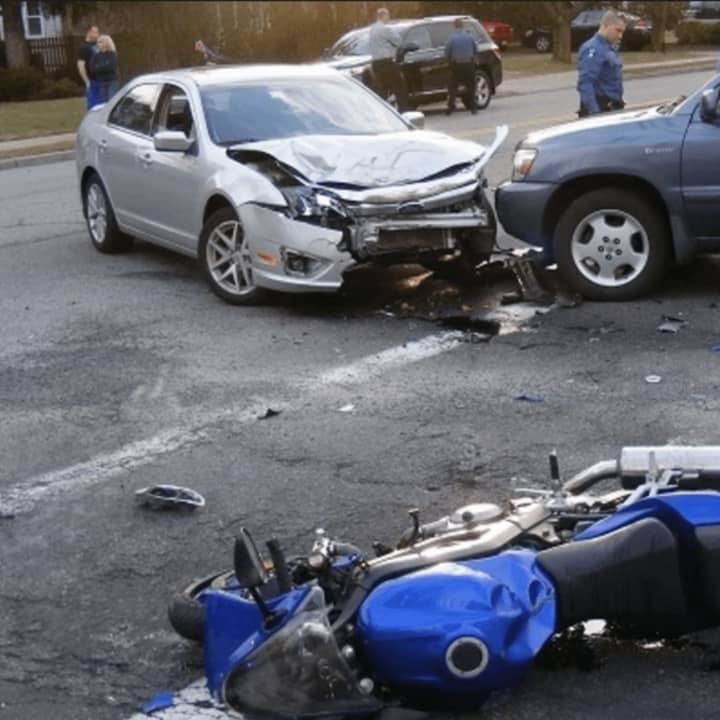"Put the Brakes on Fatalities Day" was launched 16 years ago -- not as a crackdown but to help convince Americans to drive safer.
It's become more critical than ever, organizers say, because of the alarming rate of distracted driving fatalities.
Four years ago, authorities said distracted driving contributed to 58 deaths on New Jersey roadways.
Last year, that number had ballooned to 115 -- nearly 20% of all traffic deaths.
Certainly, there's no way that no one will be killed in a crash nationwide in a single day, given that, on average, someone in the U.S. dies in a crash every 13 minutes.
But that doesn’t mean deaths cannot be avoided, especially if people seriously consider the consequences of how they drive.
Such as:
- Buckling up for EVERY ride;
- Doing the speed limit;
- Staying sober;
- And, especially, avoiding ALL distractions.
That includes texting, GPS devices and everything else people try to do when they should be paying attention to what’s ahead.
Electronic stability control, forward collision warning and lane departure warning systems have all helped the cause, as have rumble strips, cable medians and other advances.
New Jersey also has the #77 alert system, which anyone can use to report all forms of dangerous driving, from those operating a vehicle while looking at a cell phone to those driving while impaired.
Still, the state is plagued with growing hundreds of traffic deaths -- nearly a third of them pedestrians.
The percentage of pedestrians killed in New Jersey, in fact, has recently been TWICE the rate as the rest of the United States.
Awareness campaigns emphasize the need for personal responsibility.
“Important initiatives like ‘Put the Brakes on Fatalities Day’ will undoubtedly raise driver awareness and encourage a change from dangerous driver behaviors that contribute to fatal motor vehicle accidents,” said Col. Rick Fuentes, superintendent of the New Jersey State Police.
Personal choices that can save the most lives – including your own, Fuentes said.
Even the simplest or quickest of texts or phone calls, or a passing glance at yourself in the mirror, could make the difference between you, a loved one or someone else's loved one living or dying.
The split-second you divert to a cellphone, GPS or anything other than what’s directly in front of you could be the instant you need to make a decision that could save you or someone else.
IMPORTANT TIPS FOR DRIVERS:
- Keep your car in safe running shape. Check the tire pressure, wear and alignment. Have a mechanic give it the once over, especially with winter approaching.
- ALWAYS buckle up, no matter where or how far you’re going. It’s not always about your car hitting another’s. You never know what could slam into you.
- Understand that driving while impaired doesn’t always involve alcohol. Reconsider your mode and method of travel if you are taking ANY kind of medication, be it prescribed or over the counter.
- Keep a safe distance. It’s the unexpected that holds the most danger. A car doing 60 covers 88 feet in one second.
- Remember: You might have a clear idea in mind, but the other drivers don’t know it. So never get caught between the right side of a truck or bus and the curb when you’re not on a highway, and never try and squeeze between a large vehicle and other cars.
- Avoid cutting in front of anyone, suddenly speeding up, hopping lanes or riding someone’s bumper. You never know how others are going to react, especially in heavy traffic. Someone ahead might suddenly hit their brakes, or someone behind could get rammed.
- You could have cat-like reflexes and the best brakes in the world, but they won’t save you if you’re barreling toward a stopped car and you realize it too late. Statistics show that 80 percent of accidents, and 65 percent of near hits, involve some form of driver inattention WITHIN THREE SECONDS of the crash.
- Keep your eyes on the road in more ways than one. Noticing a narrow road or bridge, or a steep slope that ends in a ditch, can spare you a nasty accident if you handle them carefully.
- Don’t ever hesitate to call police if you see trouble. That can be either a dangerous driver or a road problem that someone may not yet have noticed. Police really appreciate the help.
FOR PEDESTRIANS:
- Be careful crossing streets, even at clearly marked intersections – that’s where many fatal accidents occur.
- Keep a safe distance when standing on corners. Large turning vehicles often cut corners – and could clip you.
- Same as when driving: Beware of blind spots around trucks, buses and cars.
- Don’t assume drivers have the kind of reaction time and awareness of stopping distance that will protect you as you cross the street. A motorist might see you clearly but accidentally hit you anyway. Truck brakes and gears are notorious for sticking.
- Despite what pedestrians in Paterson, Newark and other large cities do, don’t deliberately challenge oncoming cars. If you absolutely, positively can’t wait for a signal, make sure it’s safe – and then hustle to the other side with more than enough room to spare. After all, there’s always that oncoming driver who DOESN’T see you.
MORE INFORMATION: www.brakesonfatalities.org
Click here to follow Daily Voice Hackensack and receive free news updates.


